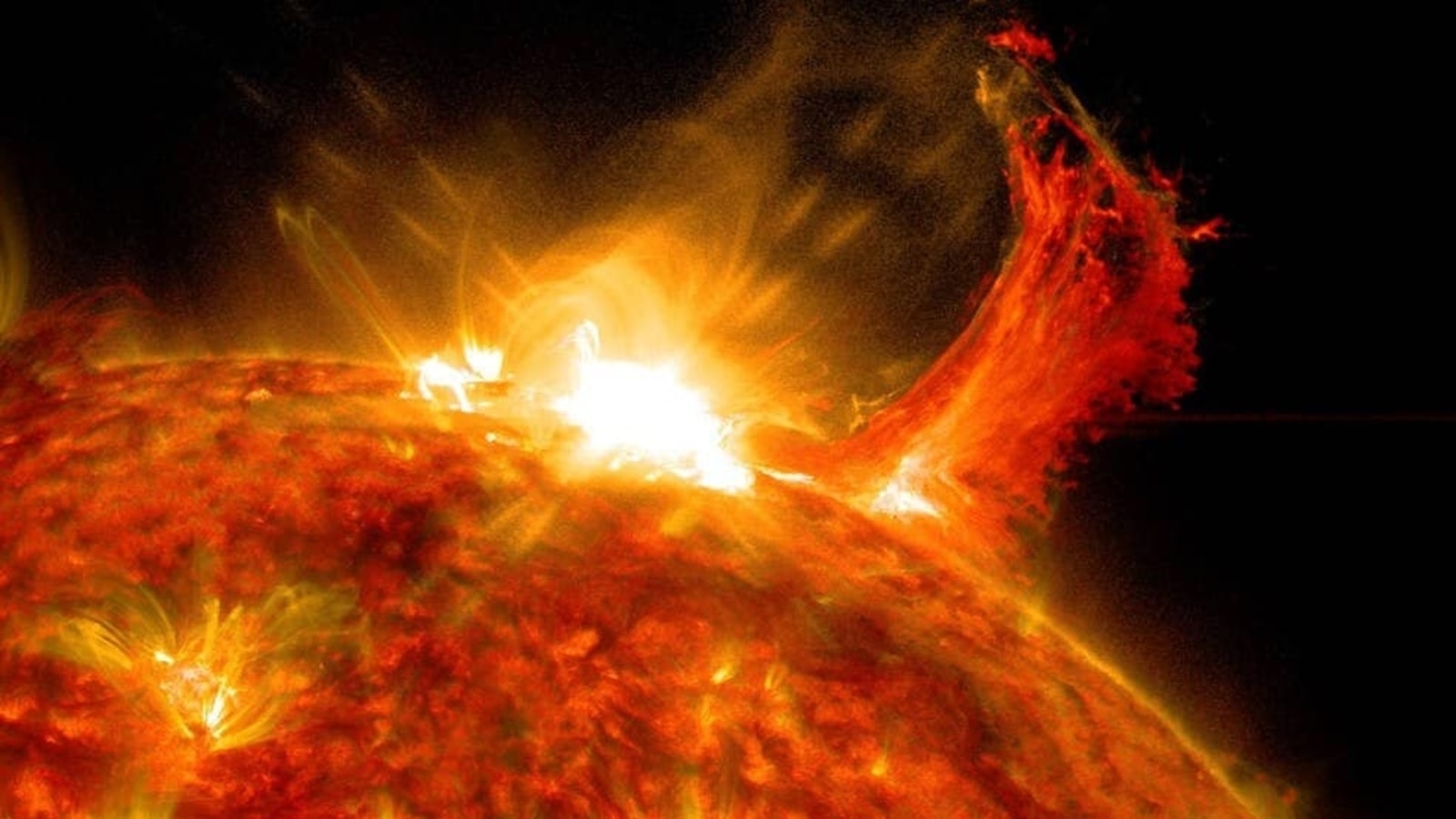Silence before the solar storm? Unstable sunspot yet to explode; Can still blast X-class solar flares
It has been 48 hours since the sunspot AR3311 came into Earth’s view. NOAA satellites predicted that it can explode resulting in X-class solar flares. However, it has not erupted yet. Could this be the calm before the solar storm hits?






 View all Images
View all ImagesAs we enter day three of the unstable giant sunspot AR3311 being in full view of the Earth, scientists are concerned. The sunspot was expected to explode already, erupting solar flares. But as time keeps passing, the fear of an X-class solar flare strengthens. This is because despite appearing relatively stable, it is filled with the highly unstable beta-gamma-delta magnetic field. Many believe that the last 48 hours have been the calm before the storm and day three is when something may finally give and spark a terrifying solar storm on Earth.
As per a SpaceWeather.com report, “Giant sunspot AR3311 has been relatively calm for the past 48 hours. It might be the calm before the storm. The sunspot has an unstable 'beta-gamma-delta' magnetic field that harbors energy for strong X-class solar flares. NOAA forecasters estimate a 10% chance of an X-flare”.
Is a solar storm still possible?
In short, yes. The chances of a solar storm are still there, although lesser than previously estimated. However, despite the low odds, if the sunspot does explode, it will most certainly be an X-class solar flare eruption, due to the extremely high magnetic field present in the region. As such, the next couple of days are extremely crucial as we cannot truly be safe till the sunspot moves out of Earth's view.
If things go wrong, the sunspot can produce a highly charged coronal mass ejection (CME) that can deliver even G5-class geomagnetic storms on Earth. Such storms hitting the Earth can damage satellites, disrupt GPS, mobile networks, and internet connectivity, cause power grid failure, and even impact ground-based electronics.
NOAA's GOES-16 satellite in solar storm prediction
GOES-16, formerly known as GOES-R before reaching geostationary orbit, is the first of the GOES-R series of Geostationary Operational Environmental Satellites operated by NASA and the National Oceanic and Atmospheric Administration. It was launched on November 19, 2016, and became operational on December 18, 2017. GOES-16 is located in geostationary orbit over the Atlantic Ocean and provides continuous imagery and atmospheric measurements of Earth's Western Hemisphere. It also carries a lightning mapper, which can detect both cloud-to-cloud and cloud-to-ground lightning. GOES-16 is a vital tool for weather forecasting, climate monitoring, and space weather prediction.
Catch all the Latest Tech News, Mobile News, Laptop News, Gaming news, Wearables News , How To News, also keep up with us on Whatsapp channel,Twitter, Facebook, Google News, and Instagram. For our latest videos, subscribe to our YouTube channel.





























